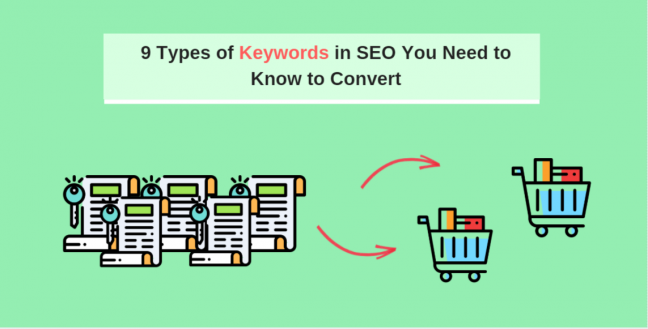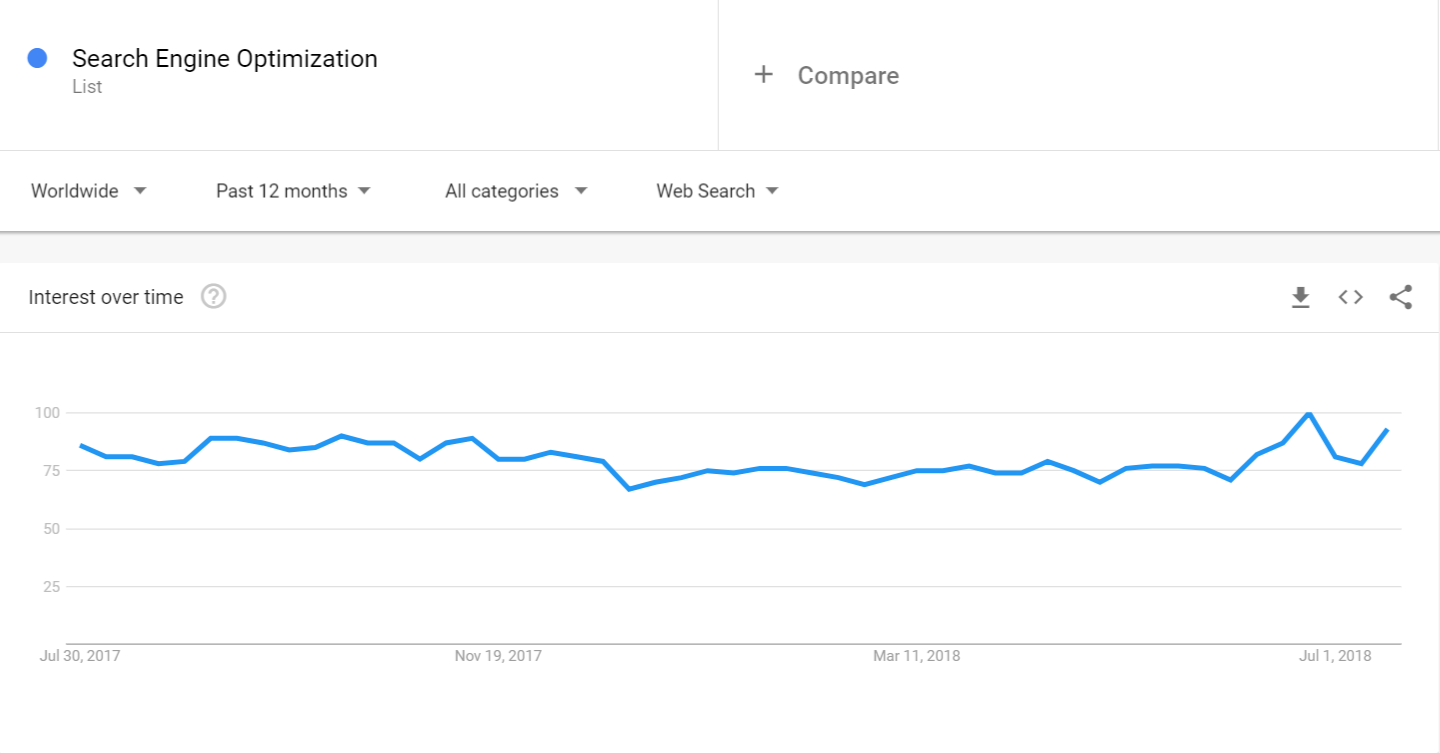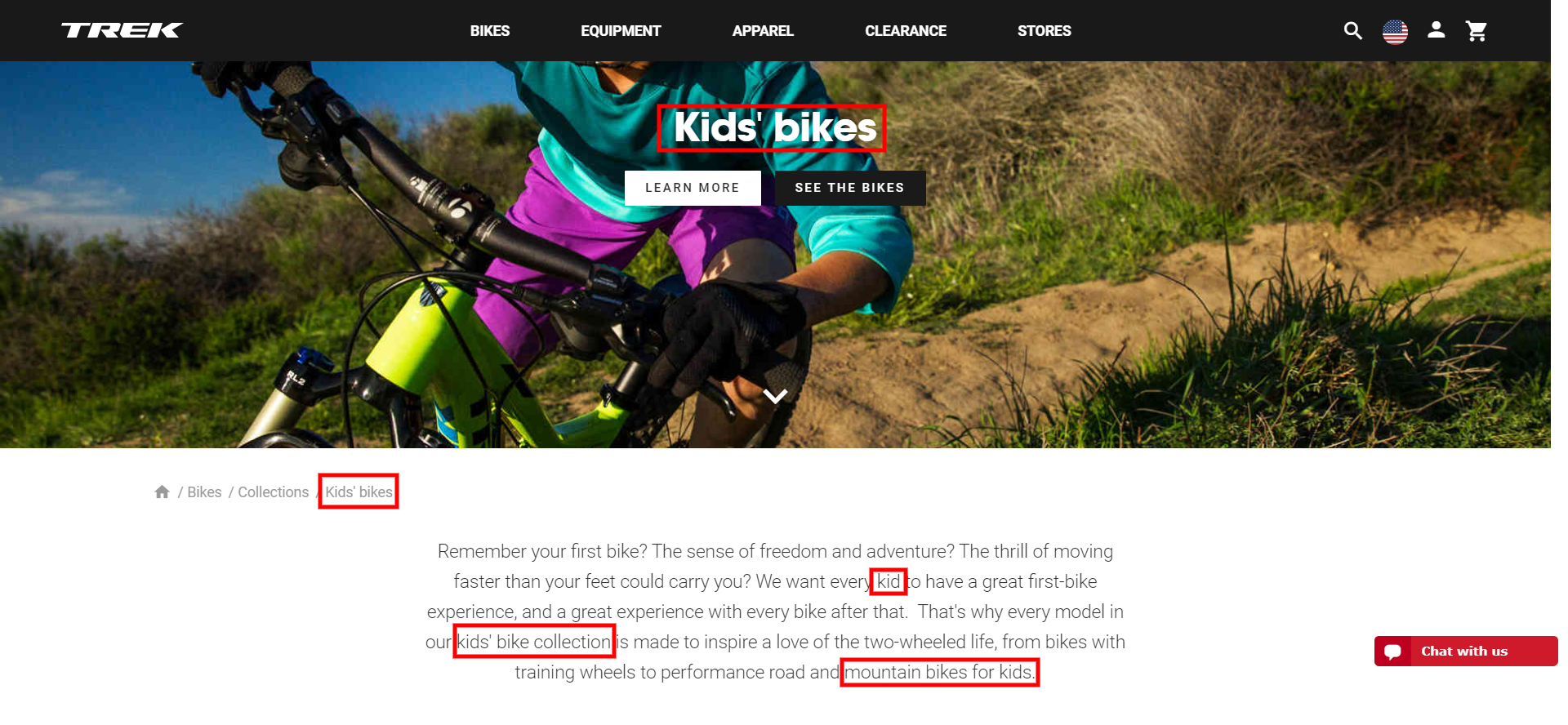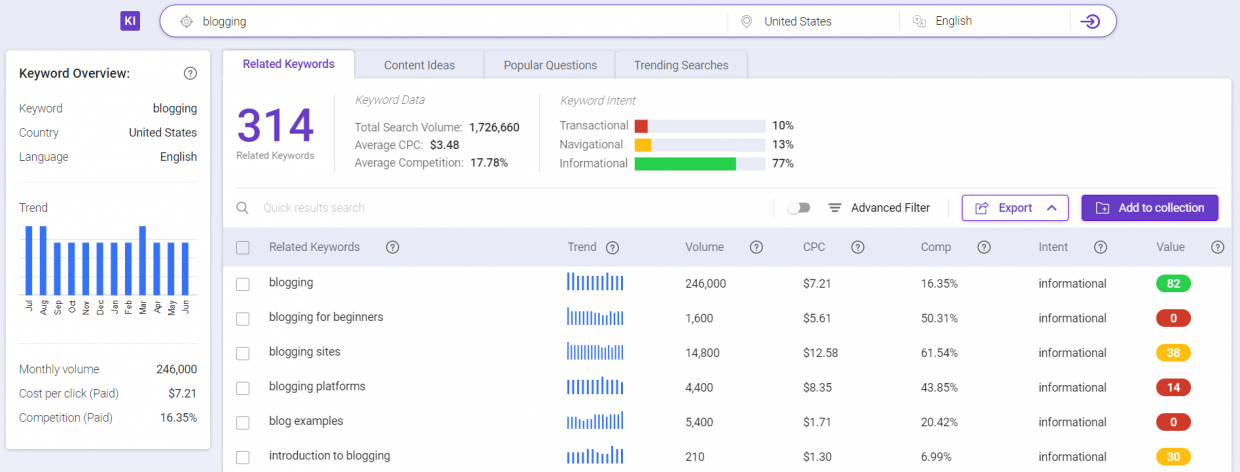Steph W. from SEOPressor


...help you check your website and tell you exactly how to rank higher?


93
score %
SEO Score

Found us from search engine?
We rank high, you can too.
SEOPressor helps you to optimize your on-page SEO for higher & improved search ranking.
By jiathong on June 20, 2020

Brian Dean, Backlinko:
“I’m not exaggerating when I say that without the right keywords, there’s no such thing as SEO.”
Keywords are the first step to a successful SEO. And when you nailed your SEO, that’s when your organic views start coming in. More views, more potential customers, more conversions, more profit.
The thing is, there are so many talks on keywords in SEO. But how can we know what kind of keywords to choose when we’re doing keyword research?
Which type of keywords should we use to really maximize our SEO effort?
You should use different keywords for SEO to target different audiences at each stage of the funnel. That way, you can reach a broader range of people and increase your chance of securing a customer.
Before we go there, do you know how many keyword types there are?
In this blog post, let me introduce you to 9 types of keywords in SEO that you need to know. Starting from the more common ones like short-tail and long-tail keywords to more technical ones like LSI keywords.
In a rush? Here’s a quick summarization of the characteristics of those 9 types of keywords.
As the name suggested, short-tail keywords are short keywords (surprise!) that are made up of three words or less. Sometimes they are also called the head keyword.
Short-tail keywords have a huge amount of search volume but are also highly competitive.
For the audiences, they use short-tail keywords when they are at the very first step of researching for stuff.
That’s why it’s very difficult to pinpoint the clear search intent for short-tail keywords. They tend to be all around the place.
Let’s look at an example when someone searches for “lemon”. They might be searching for what vitamins are provided by a lemon, or how much calories a lemon has.
Short-tail keywords don’t convert well because of the difficulty in matching searcher intent.
Characteristics:

As you can tell, the short-tail keyword that consistently appears on our website is SEO. This gives Google a strong signal that that’s our forte. But are all people searching for SEO looking for a WordPress plugin? Probably not.
But this doesn’t mean that it’s not helping. Since this is just one of the many more keywords that we are targeting in the website, including our individual blog posts.
[bof_display_offer id=30342]
Long-tail keywords consist of more than 3 words. They are also usually much more specific than short-tail keywords.
They have a much lower search volume compared to a short-tail keyword. But they make it up by being much less competitive.
The most important thing you have to know with a long-tail keyword is you can easily pinpoint the search intent.
Let’s look at an example, “ 4 x 12 fl oz S.Pellegrino mineral water”.
This definitely means the searcher is looking for websites that sell this mineral water. So if you want to target them, you know you’ll need to have the price, shipping fee, and store location on the website.
Better yet, when the users are making searches with these long, and detailed keywords, they are usually ready to make a purchase!
Characteristics:
When you think about fresh keywords, you need to think about something that is hyped recently.
An example of fresh keywords is The Avengers: Infinity War. (When I’m writing this post that movie just hit the theatres. But I’d imagine that that’s old news for you, so try to imagine this with any newest blockbusters.)
As you can see, the search volume peaked around the time of the movie’s release but drops sharply after.
You can make use of a fresh keyword’s explosive volume of search to attract more organic views but be prepared for a harsh fall when the hype is over.
The thing with fresh keywords is, you can chime in with the latest news and attract some new audience, breaking from your old, existing audiences.
Characteristics:
Evergreen keywords are those that are relevant all the time. The search volume might fluctuate now and then but there won’t be extreme changes.
The point is, you can be sure that from the moment you publish something focusing on the evergreen keyword until let’s say two years later, there will still be users searching for and wanting to read about it.
So for pieces focusing on evergreen keywords you need to make sure that it can age gracefully, or better yet, keep it updated perhaps once a year to maintain relevance.
The views may not be explosive, but they will be consistent. Double that with the stretch of time, you will have a sizeable amount of views with this one content.
Contents surrounding evergreen keywords tend to be informative and educational.
Remember this, if you have a nicely crafted informative piece, that can add on to your authoritative points.
The more educative contents you pump out, the more authoritative you become. Which means a higher position in SERP. Bringing you more exposure, more views, and more loyal readers.
Characteristic:

These are the keywords that explain and describe your product.
It’s not just a Keyword Tool, it’s an LSI Keyword Research and Planning Tool. See the difference?
Searchers searching for a product defining keyword is looking for something very specific. And you can either be exactly what they want or not at all.
When searchers go for product defining keyword they are already at the early stage of purchasing.
All they need is a little more information to click on that checkout button.
So when you’re targeting a product defining keyword, remember to be as detailed as possible.
The best way to get your product targeting keywords is very simple, just look at your product list, then create a detailed description for each of them.
Now look at those descriptions and pick out two fundamental keywords. Add them to your product name, and there you have it.
Characteristic:
You have your targeted persona right? If you don’t, create an imaginary profile for your targeted audience.
It’s simple.
Are they mostly male or female? How old are they? Where are they from? What is their job?
The more detailed you can be, the more information you can use to your advantage.
Let’s use this again as an example, instead of just “LSI Keyword Research and Planning Tool” add in your customer defining keyword: LSI Keyword Research and Planning Tool Built for Marketers.
One-size-fits-all products are rare. So address your target audience clearly, focus on their pain point because one keyword will make a whole lot of the difference.
Also, consider using customer testimonials to build a narrative on how your product benefits them. That will help build better credibility and draws familiarity with the readers who share similar profiles.
Characteristic:

You can target a specific neighborhood, city, state, or even country using a geo-targeting keyword.
This is especially useful for smaller local businesses where you’d want to attract the most relevant customers, the local customers, to your storefront.
How can I get my geo-targeting keywords? Well, this is actually the easiest keyword to acquire on the list. The area that your business serves is your geo-targeting keywords, just that.
You might already have your address on display at the sidebar, but inserting it into the content itself can bring a big difference.
Geo-targeting keywords are extremely important for local businesses that want to establish their local SEO. Read our guide on local SEO here to learn more about it.
Characteristic:

Since you already have your geo-targeting keywords, don’t you want to know the local rankings of your competitors and your business based on those keywords?
Grid My Business is one of the best local rank tracking tools in the market. You will get immediate ranking results of your own business and neighboring competitors based on the targeted keywords in just one click away.
It supports all locations that can be found on Google Maps. You can identify your actual local competitors, monitor their local search rankings in a grid view, and even compare the monitoring results side by side with a white-label report.
Track your local search rankings with Grid My Business now!
[bof_display_offer id=30342]
LSI (Latent Semantic Indexing) Keywords are thematic keywords that are closely related to your main keyword.
Let’s look at it this way, your main keyword is lemon, its LSI keywords could be lemon tea, organic lemon, lemon nutrition, etc.
In order to get an LSI keyword, you need to first decide on the main keyword.
LSI keywords are useful in a sense where you can create topics to fit a broad theme and target all the smaller branches all based on one root keyword.
In other words, your content will show up for various keywords that users search for. This keyword will work wonderfully for content or blog posts creation.
LSI keyword is a little tricky to get your hands on.
You can look at the suggested search section on the search result page to get an idea of what keywords the search engine relates to the performed search query.
LSIGraph (full disclosure, this is our sister product) is another great tool that will automatically give you a list of LSI keywords together with their search volume and competition. Just type in your main keyword and voila happy content planning.
Characteristic:
When a user performs a query, their intent will fall into these 3 categories:
Users want general information on a specific item or topic. So use keywords like benefits of, ways to, guide on, facts. These keywords tend to appear in informational contents aiming to educate the reader. You can also make use of the Ws like where, what, who to craft your informational content.
Users with commercial intent are more serious about making a purchase. So start using keywords like specifications, expiration date, place of origin, shipping fee, etc to give clearer and product-specific information.
This is the last step before a user places an order. At this point, they are comparing products from multiple stores and trying to get the best deal. Use keywords like these, best price, sale, best quality, guaranteed, no fuss refund, etc to make them feel comfortable to buy from you.
There are 9 types of keywords: short tail, longtail, short-term, long-term, product defining, customer defining, geo-targeting, and intent targeting. All of these keywords have their special strength that can multiply your SEO efforts when used in different situations.
But how do you discover all these keywords? For that, we recommend using BiQ’s Keyword Intelligence!
There will be 4 main tabs as you will see in the screenshot below. Related Keywords, Content ideas, Popular Questions, and Trending Searches; all to aid you in your keyword research.

Discover if your keywords are short-term or long-term looking at the search trend and see your keyword intent and popular questions to determine what your content you should craft.
Now that you know how to find and use these different types of keywords, as well as the best keyword research tool to use, it’s time to start creating your content efforts with these 9 types of SEO keywords in mind. Happy optimizing!
This post was published on July 24, 2018 and was most recently updated on September 22, 2020.
Updated: 9 December 2025


Save thousands of dollars (it’s 100x cheaper)

Zero risk of Google penalty (it’s Google-approved)

Boost your rankings (proven by case studies)
Rank High With This Link Strategy
Precise, Simplified, Fast Internal Linking.
